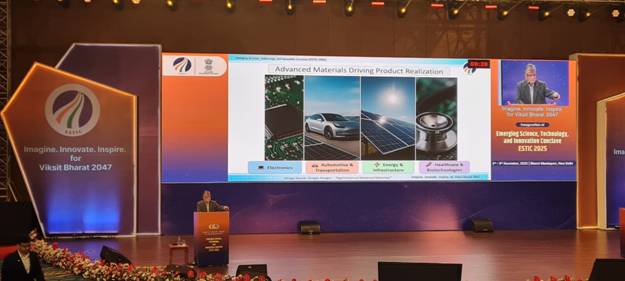U.S. President Donald Trump delivers remarks on tariffs in the Rose Garden at the White House in Washington, D.C., U.S., April 2, 2025. REUTERS
WASHINGTON, Nov 5 (Reuters) – The U.S. Supreme Court is due on Wednesday to hear arguments over the legality of Donald Trump’s sweeping tariffs in a case with implications for the global economy that marks a major test of the Republican president’s powers and the willingness of the justices to let him push the limits of his authority.
The arguments are set to begin at 10 a.m. EST (1500 GMT) after lower courts ruled that Trump’s unprecedented use of a 1977 federal law meant for national emergencies to impose the tariffs exceeded his authority. The challenge involves three lawsuits brought by businesses affected by the tariffs and 12 U.S. states, most of them Democratic-led.
Trump has heaped pressure on the Supreme Court, which has a 6-3 conservative majority, to preserve tariffs that he has leveraged as a key economic and foreign policy tool. The tariffs – taxes on imported goods – could add up to trillions of dollars for the United States over the next decade.
If the justices strike them down, “we would be defenseless, leading perhaps even to the ruination of our Nation,” Trump wrote in a social media post on Sunday.
Highlighting the importance of the case to the administration, Treasury Secretary Scott Bessent plans to attend Wednesday’s arguments in person. Trump earlier had spoken of attending but decided against it.
If the Supreme Court rules against Trump, these tariffs are expected to remain as the administration switches to other legal authorities, Bessent told Reuters.
While the Supreme Court typically takes months to issue rulings after hearing arguments, the Trump administration has asked it to act swiftly in this case.
PUSHING THE BOUNDARIES
The justices will consider Trump’s actions invoking the International Emergency Economic Powers Act, or IEEPA, to impose the tariffs on nearly every U.S. trading partner. The law allows a president to regulate commerce in a national emergency but does not specifically mention the word tariffs.
Trump is the first president to use IEEPA in this manner, one of the many ways he has aggressively pushed the boundaries of executive authority since he returned to office in areas as varied as his crackdown on immigration, the firing of federal agency officials, and domestic military deployments.
The U.S. Constitution grants Congress, not the president, the authority to issue taxes and tariffs. Trump’s Justice Department has argued that IEEPA allows tariffs by authorizing the president to “regulate” imports to address emergencies.
The IEEPA-based tariffs have generated $89 billion in estimated collections between February 4 and September 23, when the most recent data was released by the U.S. Customs and Border Protection agency. Trump has imposed some additional tariffs invoking other laws. Those are not at issue in this case.
The Supreme Court has backed Trump in a series of decisions issued this year on an emergency basis. These have let Trump policies that were impeded by lower courts amid questions about their legality proceed on an interim basis, prompting critics to warn that the justices are refusing to act as a check on the president’s power.
The tariffs case marks the first time the court has heard arguments on the legal merits of one of Trump’s policies this year. It heard arguments in May in a case concerning Trump’s effort to restrict birthright citizenship but focused not on the legality of his policy but on the authority of federal judges to block actions nationwide.
GLOBAL TRADE WAR
Trump instigated a global trade war when he returned to the presidency in January, alienating trading partners, increasing volatility in financial markets and fueling global economic uncertainty.
He invoked IEEPA in slapping tariffs on goods imported from individual countries to address what he called a national emergency related to U.S. trade deficits, as well as in February as economic leverage on China, Canada and Mexico to curb the trafficking of the often-abused painkiller fentanyl and illicit drugs into the United States.
Trump has wielded tariffs to extract concessions and renegotiate trade deals, and as a cudgel to punish countries that draw his ire on non-trade political matters. These have ranged from Brazil’s prosecution of former president Jair Bolsonaro, India’s purchases of Russian oil that help fund Russia’s war in Ukraine, and an anti-tariff ad by Canada’s Ontario province.
‘AN UNUSUAL AND EXTRAORDINARY THREAT’
IEEPA gives the president power to deal with “an unusual and extraordinary threat” amid a national emergency. It historically had been used for imposing sanctions on enemies or freezing their assets, not to impose tariffs. In passing IEEPA, Congress placed additional limits on the president’s authority compared to a predecessor law.
The Supreme Court is reviewing two rulings against Trump. The Washington-based U.S. Court of Appeals for the Federal Circuit sided with challengers including five small businesses that import goods and the states of Arizona, Colorado, Connecticut, Delaware, Illinois, Maine, Minnesota, Nevada, New Mexico, New York, Oregon and Vermont. A Washington-based federal judge sided with a family-owned toy company called Learning Resources.
“It seems unlikely that Congress intended, in enacting IEEPA, to depart from its past practice and grant the president unlimited authority to impose tariffs,” the Federal Circuit said.
The Federal Circuit also said that the administration’s expansive view of this law violates the Supreme Court’s “major questions” doctrine, which requires executive branch actions of vast economic and political significance to be clearly authorized by Congress. The Supreme Court applied this doctrine to strike down key policies of Trump’s Democratic predecessor Joe Biden.
Reporting by Andrew Chung in Washington; Additional reporting by David Lawder; Editing by Will Dunham




